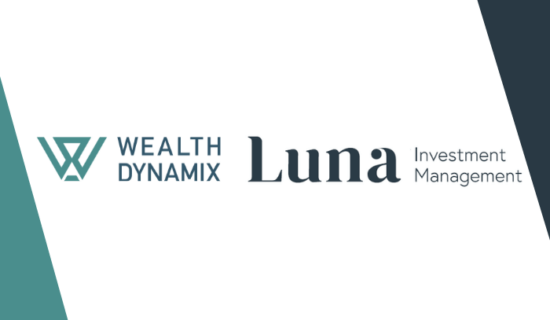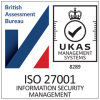Dominic Gamble, Head of Asia Pacific at Wealth Dynamix, opened an online debate recently with some remarkable statistics from a June 2020 Hubbis report, featuring insights from 175 wealth management experts.
While 87% stated that wealth management business will grow, and 80% said that Asian markets will outperform other regions, only one third believe that the industry is on track to leverage the opportunity, with the majority believing there is considerable room for improvement.
62% firmly believe that relationship managers will remain the most important element driving competitive strength, and 73% stated that Client Lifecycle Management (CLM) technology will drive personalisation. Given that 96% say this technology will free relationship managers time to adopt a more client-centric approach, and 86% expect it to drive revenue growth, it is perplexing that relationship managers have been somewhat overlooked in the digital transformation journey that wealth managers have travelled in recent years.
Wealth management technology investments have focused on AML, portfolio management, onboarding, regulatory compliance, core banking and front-end client-facing tools, at the expense of relationship management, which remains weighed down by manual processes and a multitude of different systems—as many as 20 in some cases—that are accessed every day to perform even the most basic of client servicing tasks.
Perhaps the most startling figure in the report is that 84% of relationship managers are operating reactively, and only 10% are proactive. 44% of respondents said that relationship managers need to gain a deeper understanding of their clients, and their families, to achieve greater success.
Joining Dominic on the panel were Evrard Bordier, CEO and Managing Partner at Bordier & Cie, Karen Tan, Head of Private Banking (Asia) at VP Bank, Simon Lints, Strategic Advisor at Raffles Family Office, and Mark Wightman, Wealth and Asset Management Advisory Lead (Asia Pacific) at EY.
Following an hour of lively debate, this is what the panel concluded:
1. Technology frees time to spend nurturing sticky and profitable client relationships
By leveraging technology to cut wasted time out of day-to-day admin tasks, and deliver next best recommendations in an easy to interpret way, relationship managers are better equipped to foster engaged and long-lasting client relationships. According to Karen Tan: “COVID has put client relationships to the test and being proactive is key. Understanding what lies ahead is keeping clients awake at night. Relationship managers must be knowledgeable about market conditions, and go to clients with advice and solutions that are specific to their situation.”
“For an industry that thrives on face-to-face interactions, technology—including collaboration tools—has offered the lifeline that has enabled relationship managers to preserve client relationships,” said Evrard Bordier. Many clients can check the impact of recent events on their portfolio, via an online portal, however, the “so, what now?” question can only be answered during a live conversation. By automating manual processes, and automatically aggregating data from many different systems, relationship managers have more time to spend conferring with clients and delivering tailored advice. It is quality of service, underpinned by functionally robust technology, which will differentiate one firm from another in an increasingly homogenised market, where HNW clients are likely to receive similar product recommendations, regardless of which firm is managing their portfolio.
2. Technology is needed to maximise growth
With the Asian wealth market expanding rapidly, three significant threats to growth are:
– spending too much time on administration at the expense of client-facing time
– being able to attract enough relationship managers to nurture client relationships
– being able to get new recruits up and running fast enough
Sophisticated technology that automates processes throughout the entire client lifecycle, minimises paperwork, and enables relationship managers to handle complex activity such as cross-border business and next best actions earlier in their career, addresses all these issues. “Relationship managers will have more time to spend engaging with both clients and experienced colleagues, who can impart best practice advice and train up-and-coming relationship managers to achieve more profitable outcomes for all parties,” said Simon Lints.
3. Failure to focus technology investment on relationship management will impact revenues
Relationship managers are frontline soldiers, with the power to drive revenues and influence client satisfaction, but all too often they focus on selling products to clients rather than engaging them in needs-based conversations. When properly re-tooled with technology that supports a growth mindset, improves workflows, and simplifies processes to eliminate friction, relationship managers are ideally positioned to grow their book of business and satisfy client requirements.
“Two essential elements are access to data, and access to relevant and personalised insights. By eliminating data silos and serving up data in a meaningful and digestible form, relationship managers can more effectively map client requirements to the products that are most likely to achieve their goals,” commented Mark Wightman.
4. Stakeholders must be engaged early in the implementation process to encourage uptake
Challenges around the willingness of relationship managers to adopt new technology should not be underestimated. To ensure a successful roll-out be sure to involve both relationship managers and clients during the early stages of testing, and act on their feedback. Articulate the true value of the system, not simply what it does. Explaining that the new system will eliminate the need for relationship managers to manually write and submit meeting notes will get a far more enthusiastic response than simply saying that it converts voice to text.
The full debate is now available on demand, watch it here.





